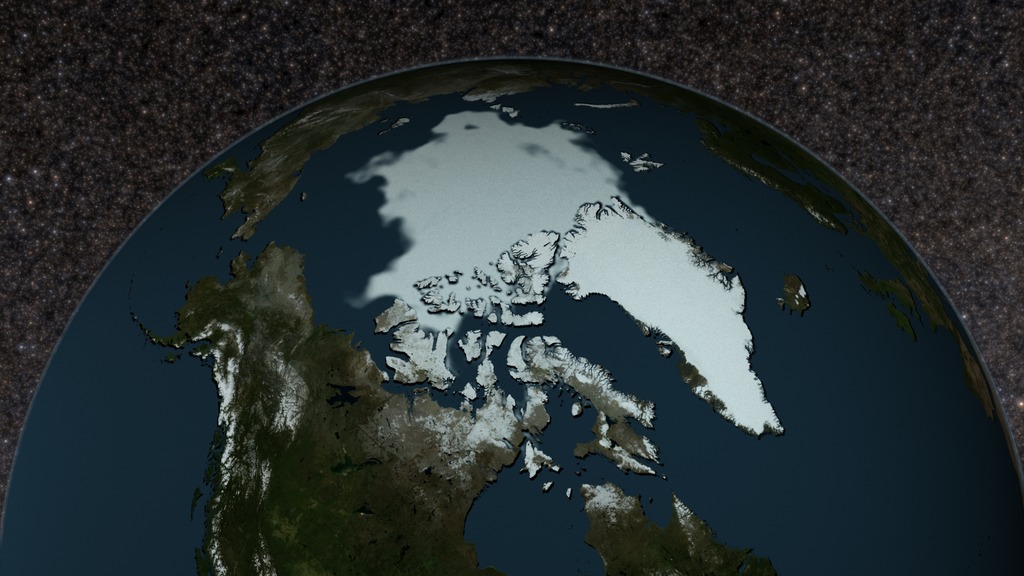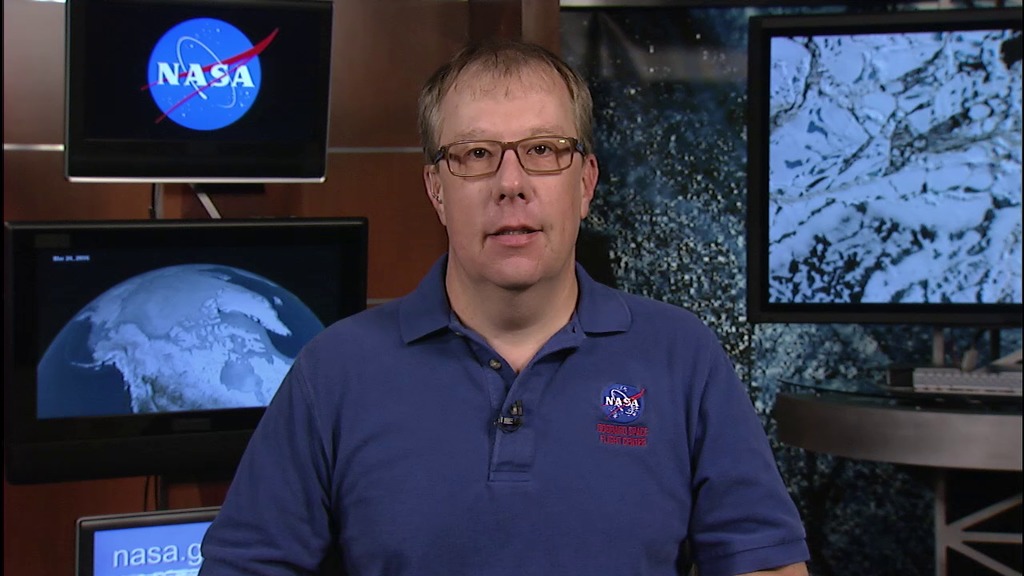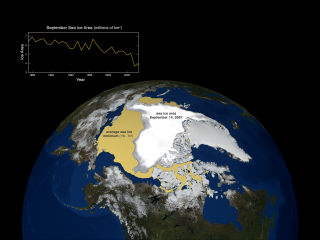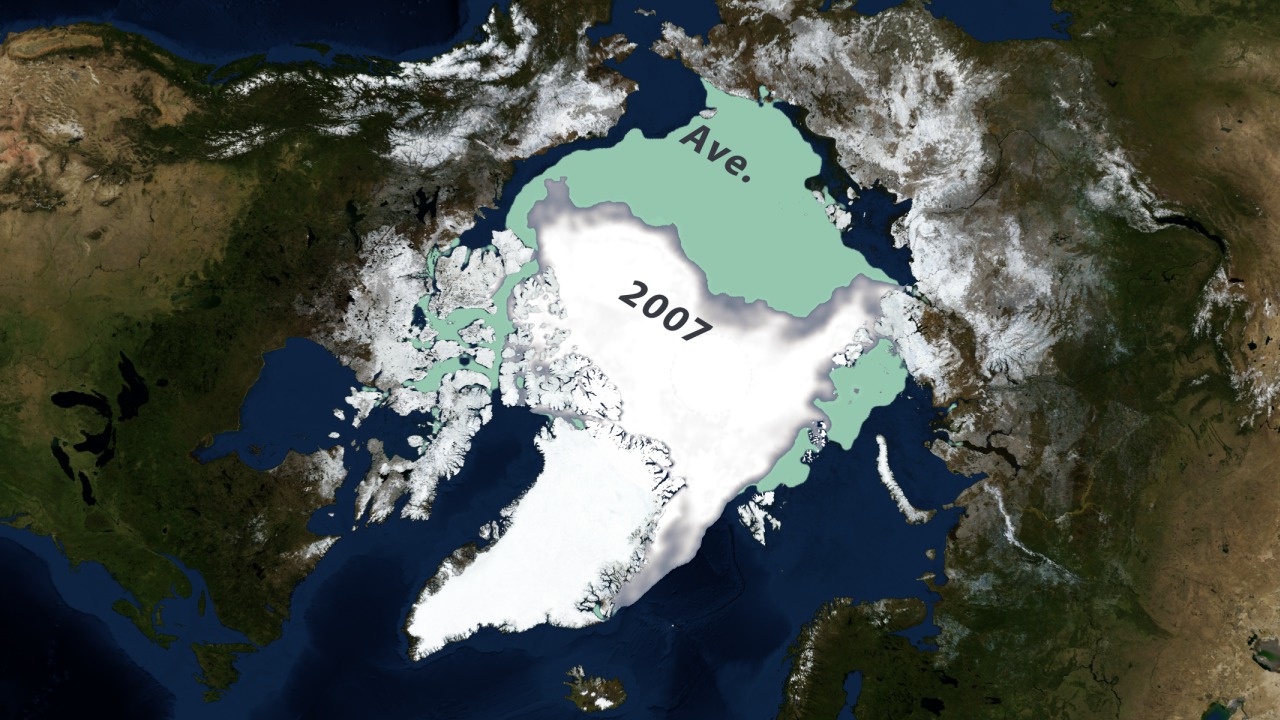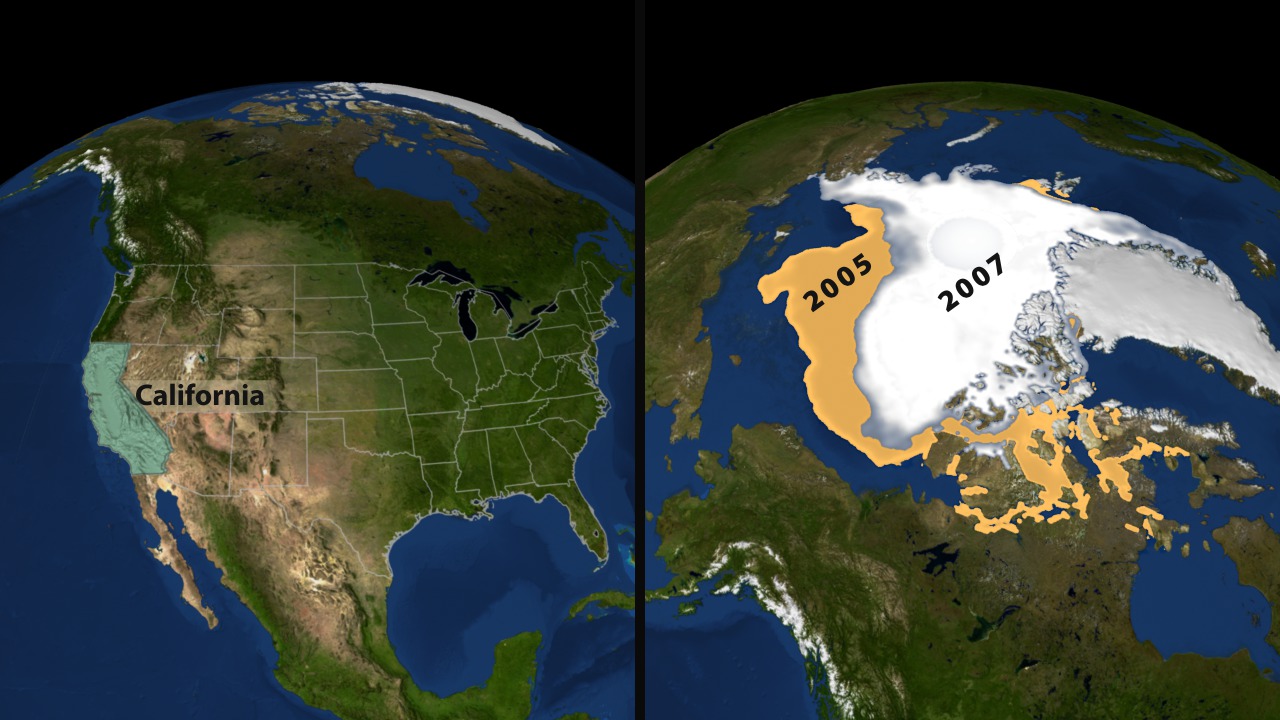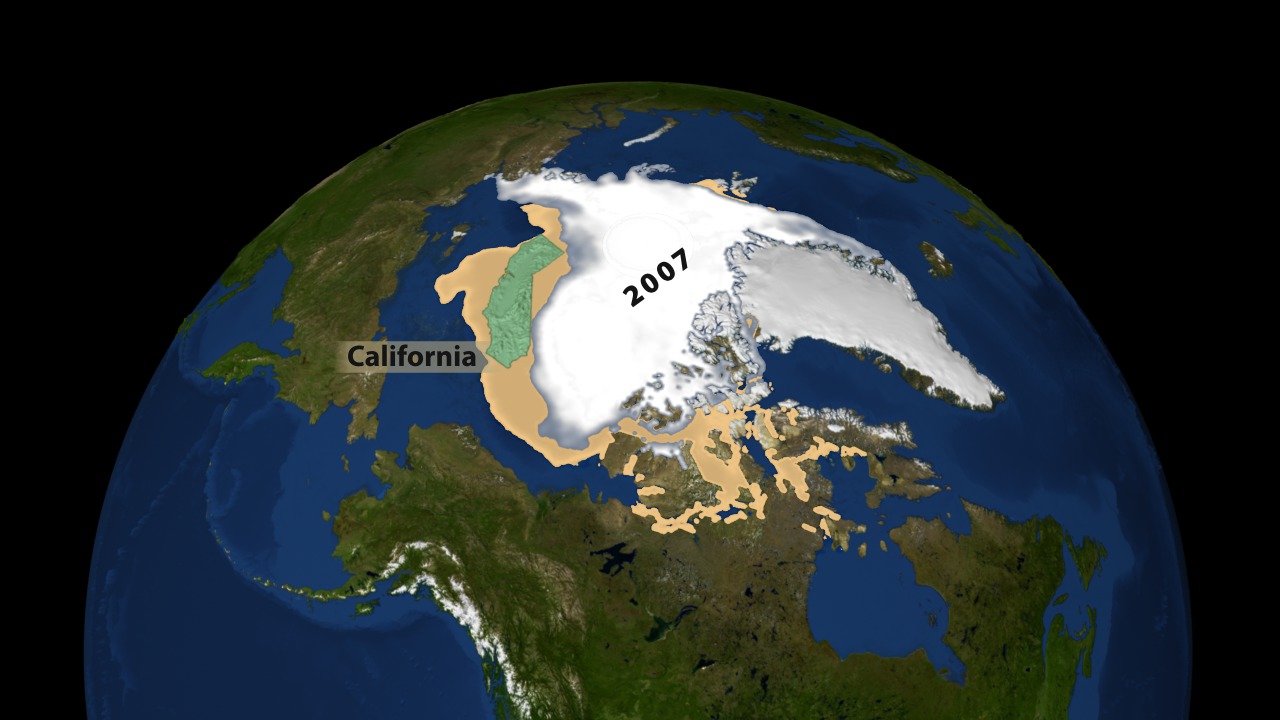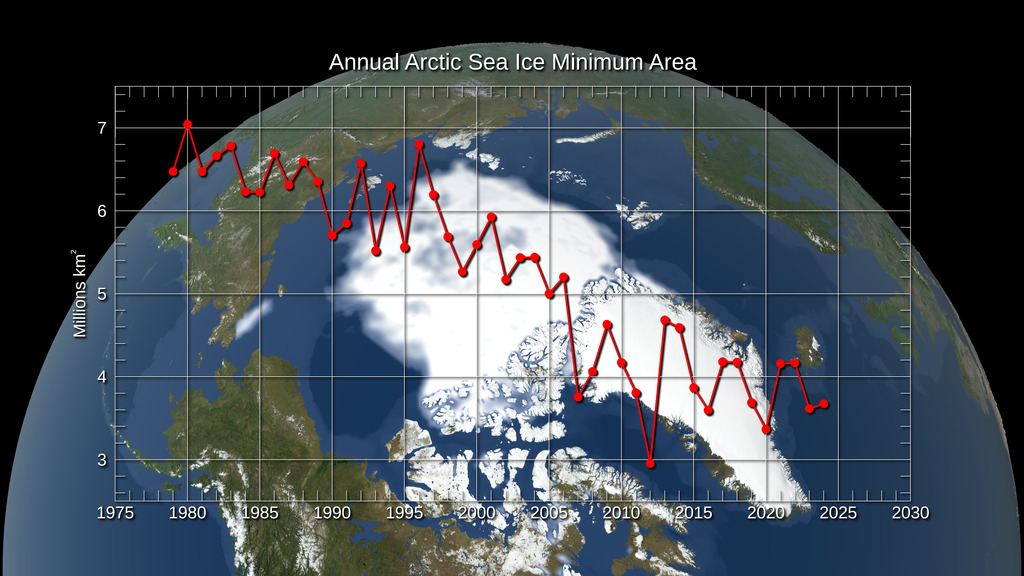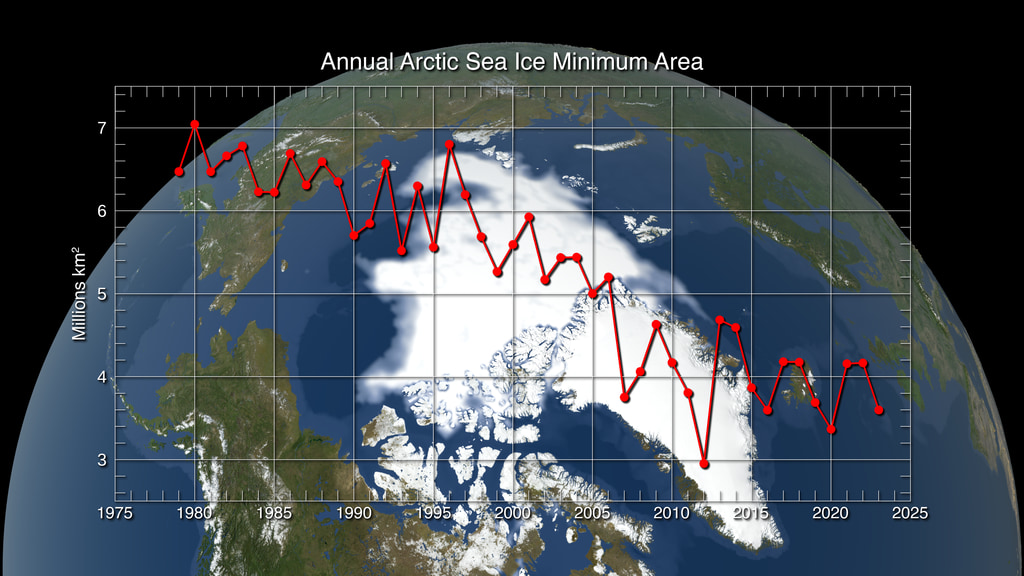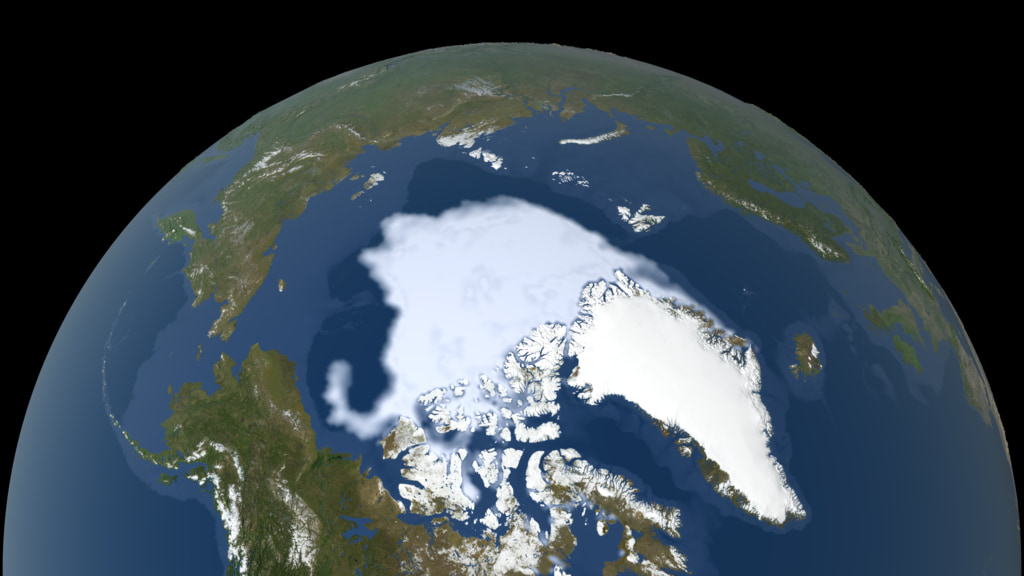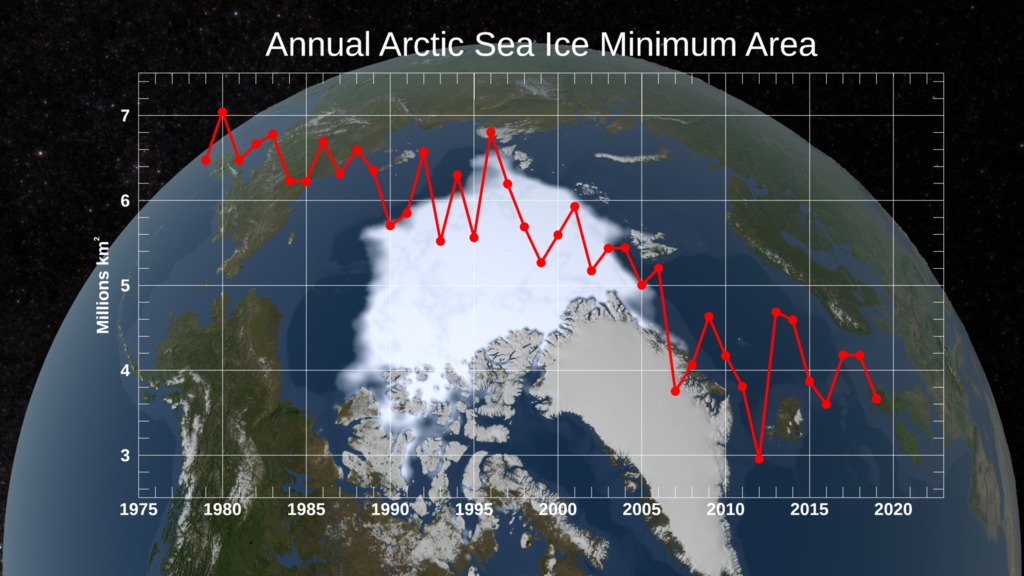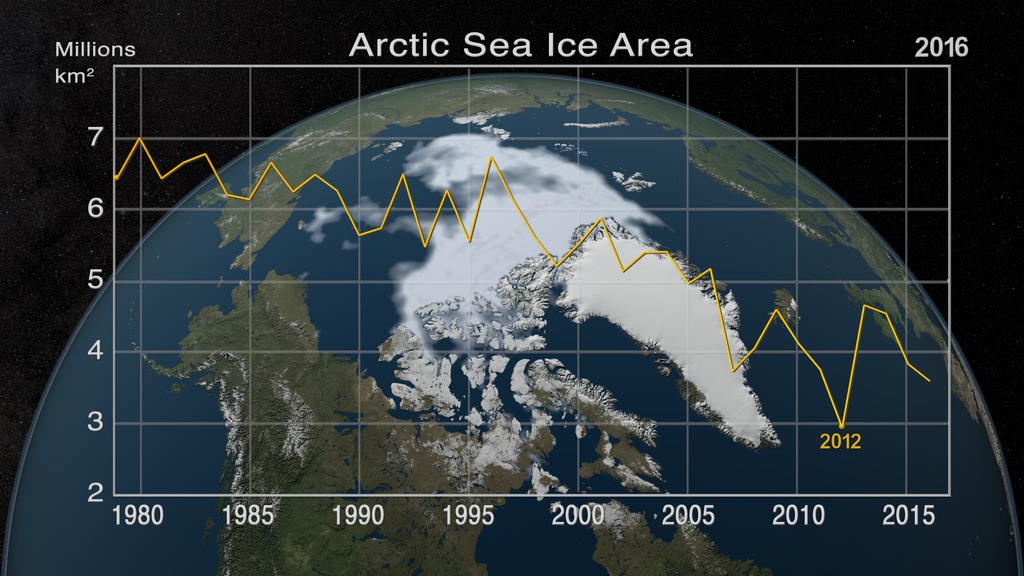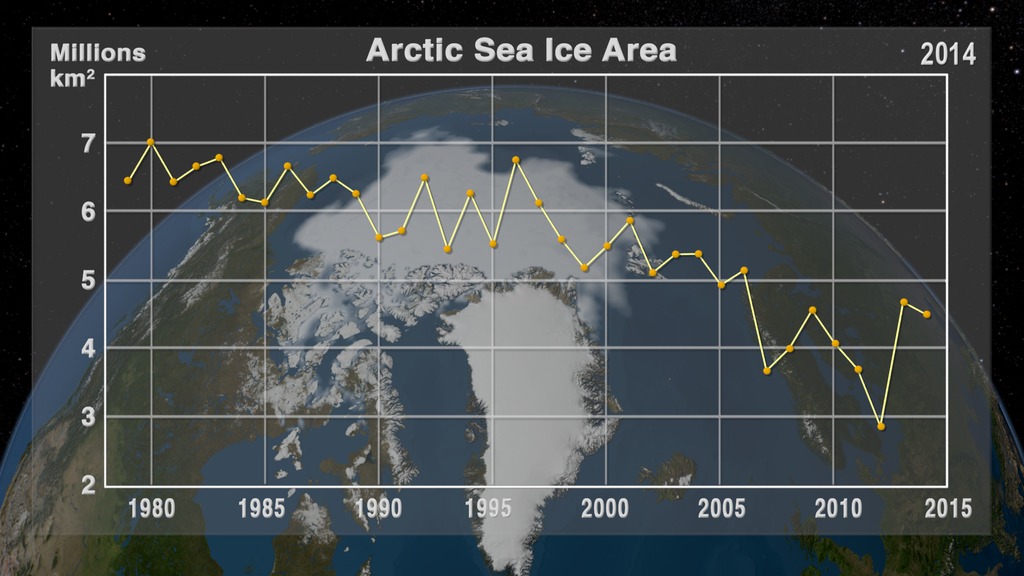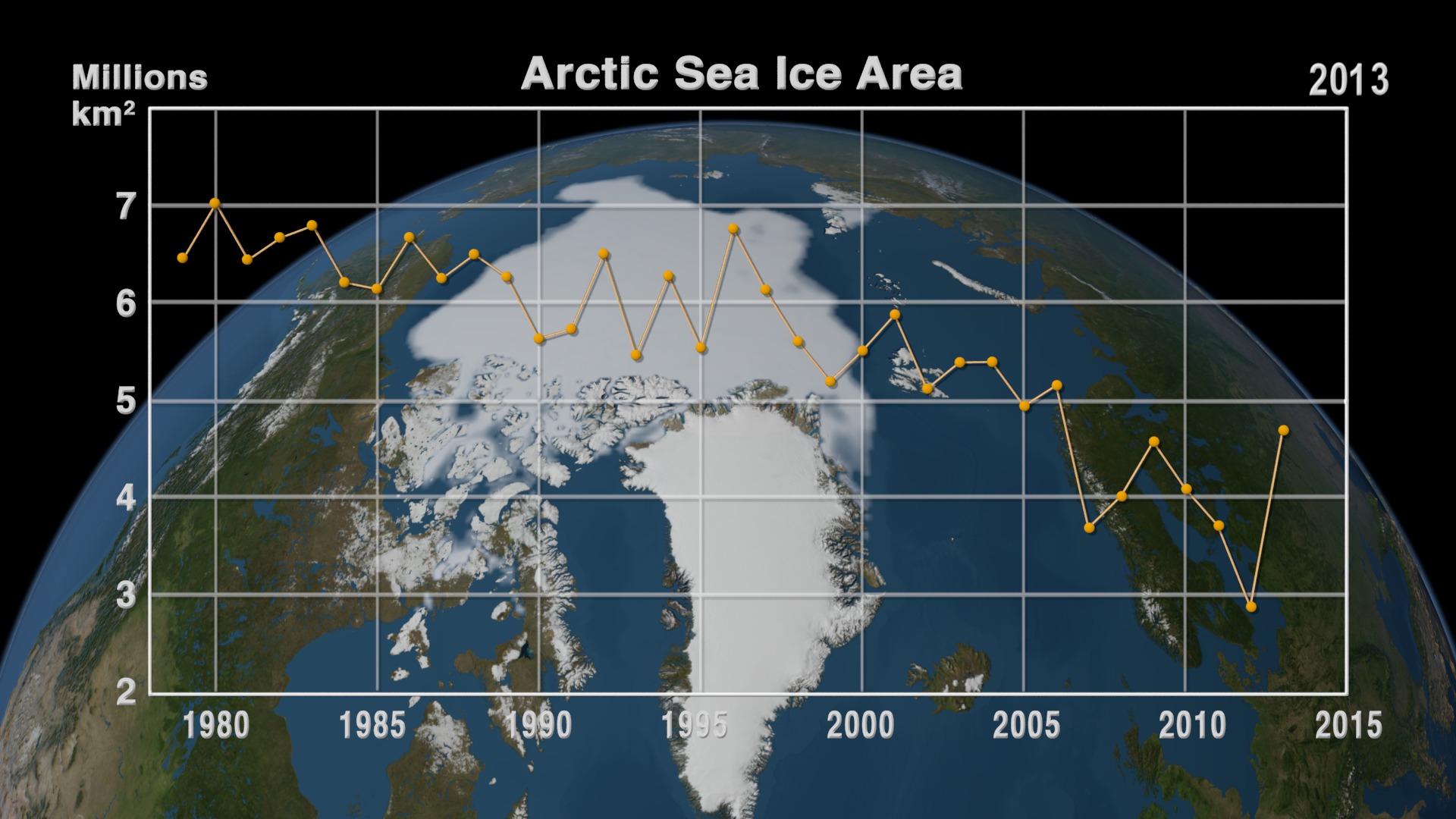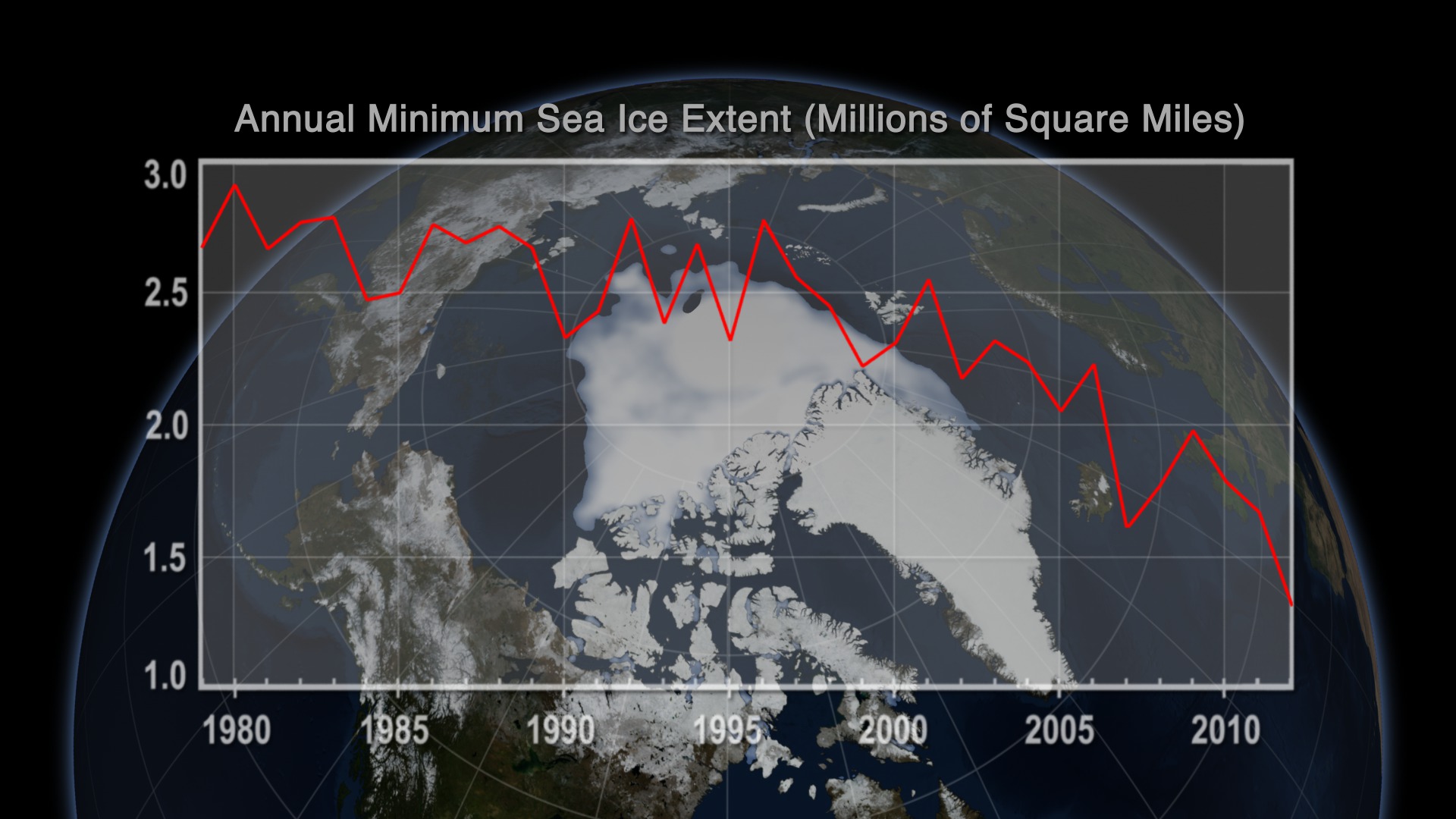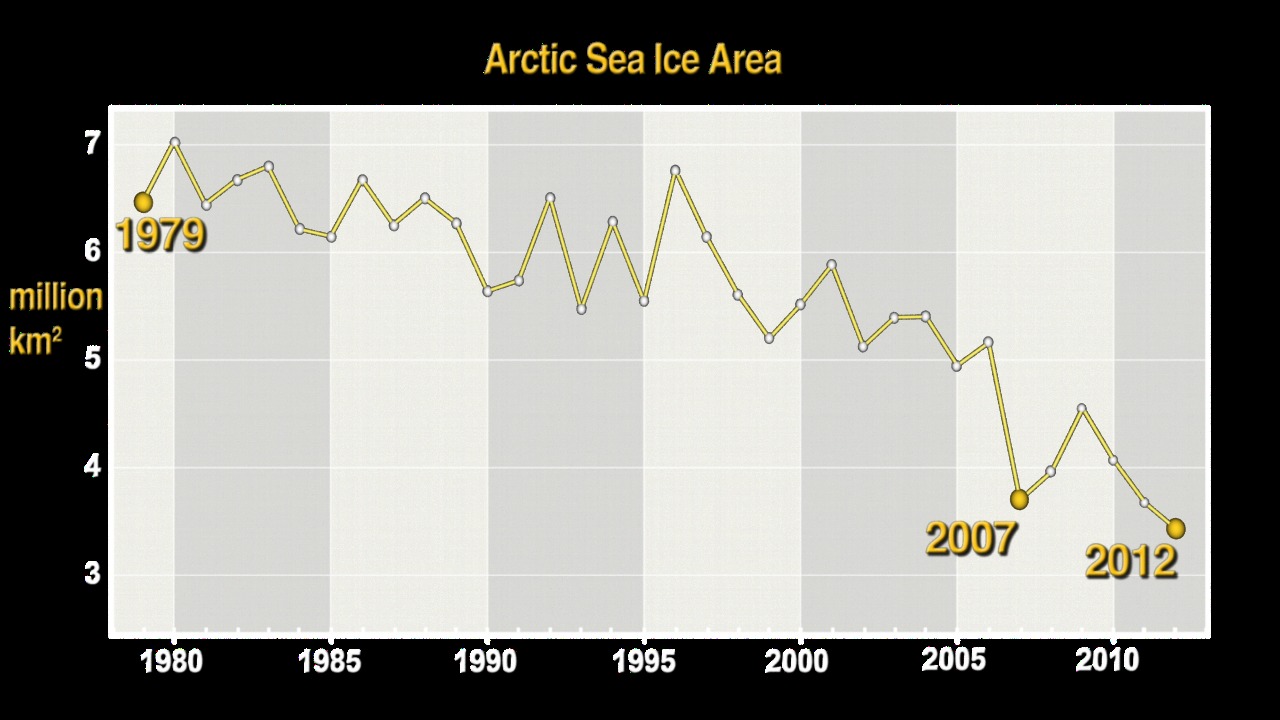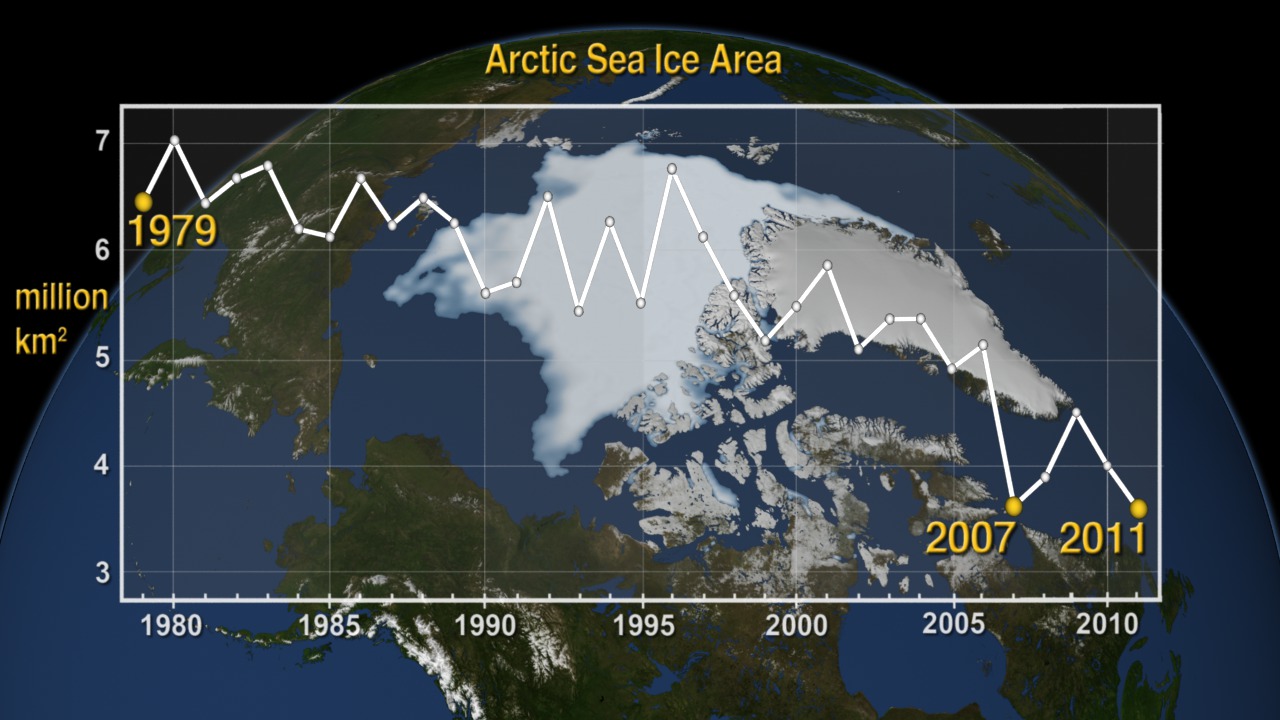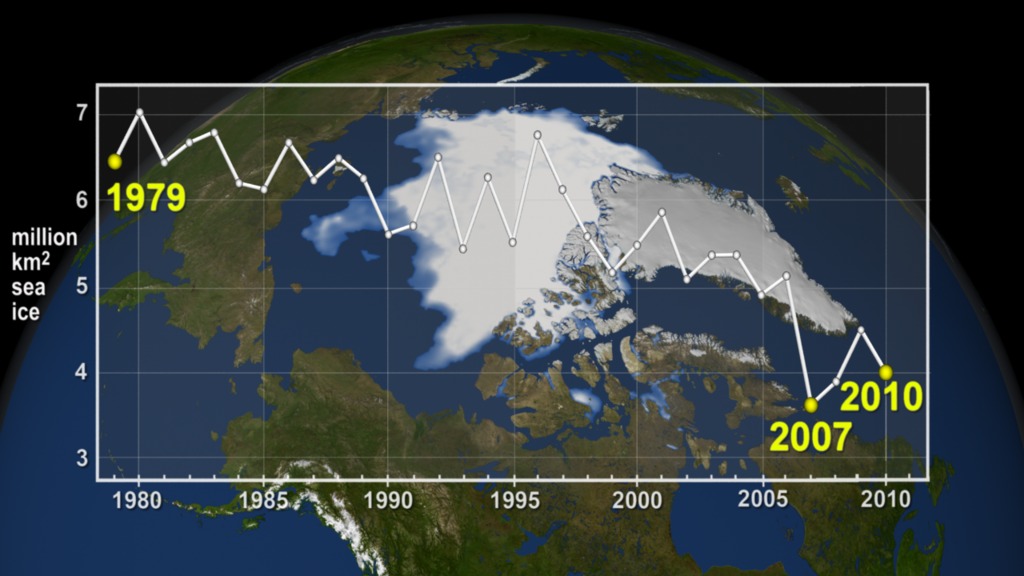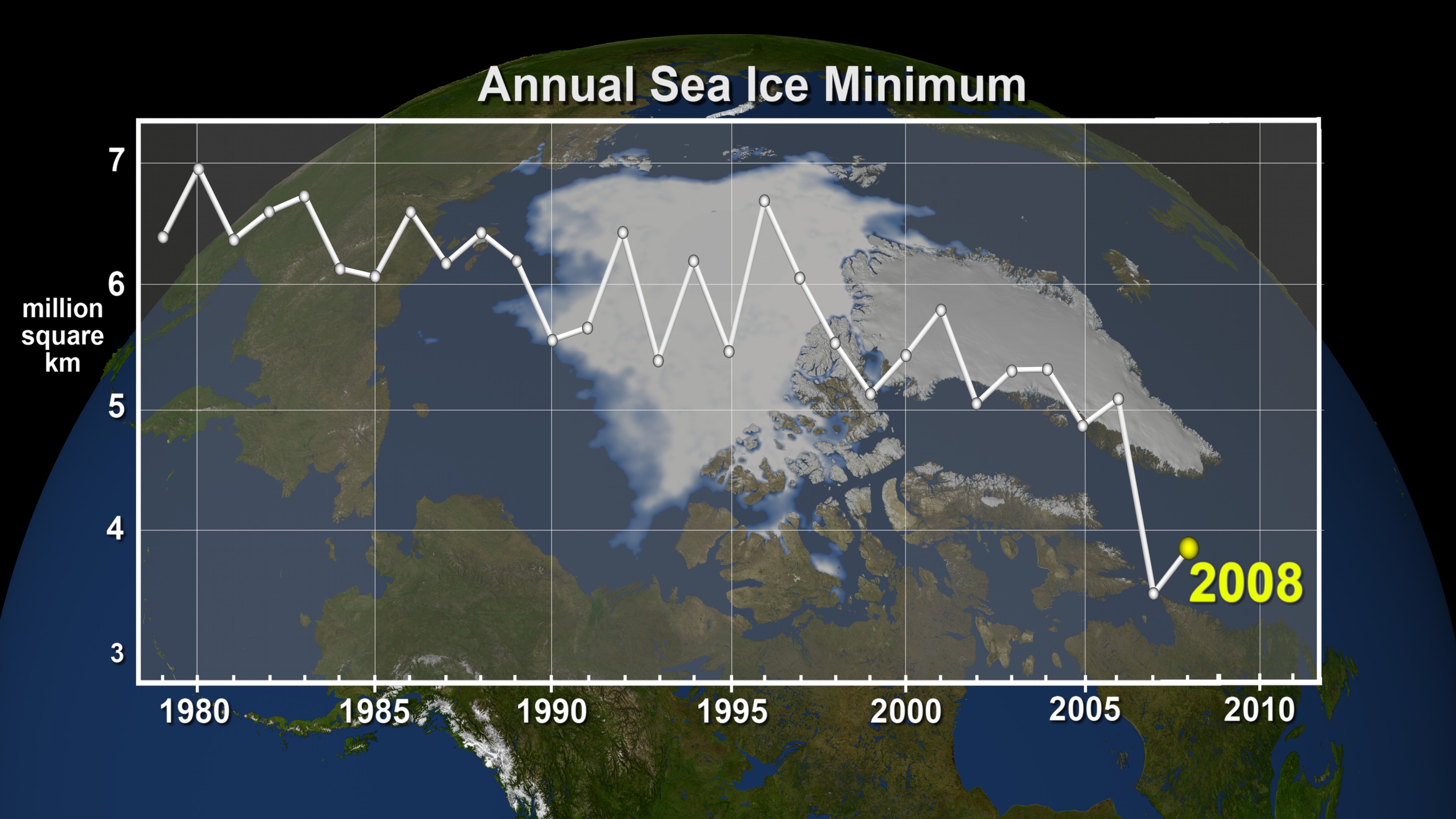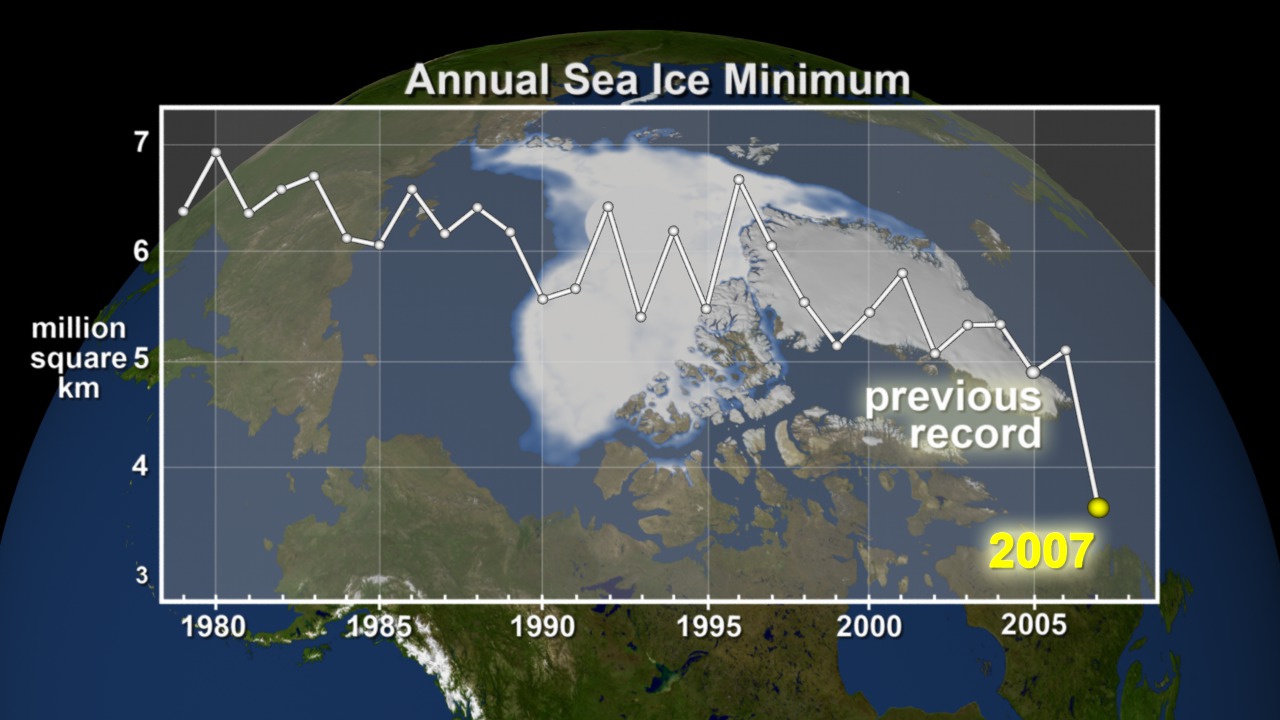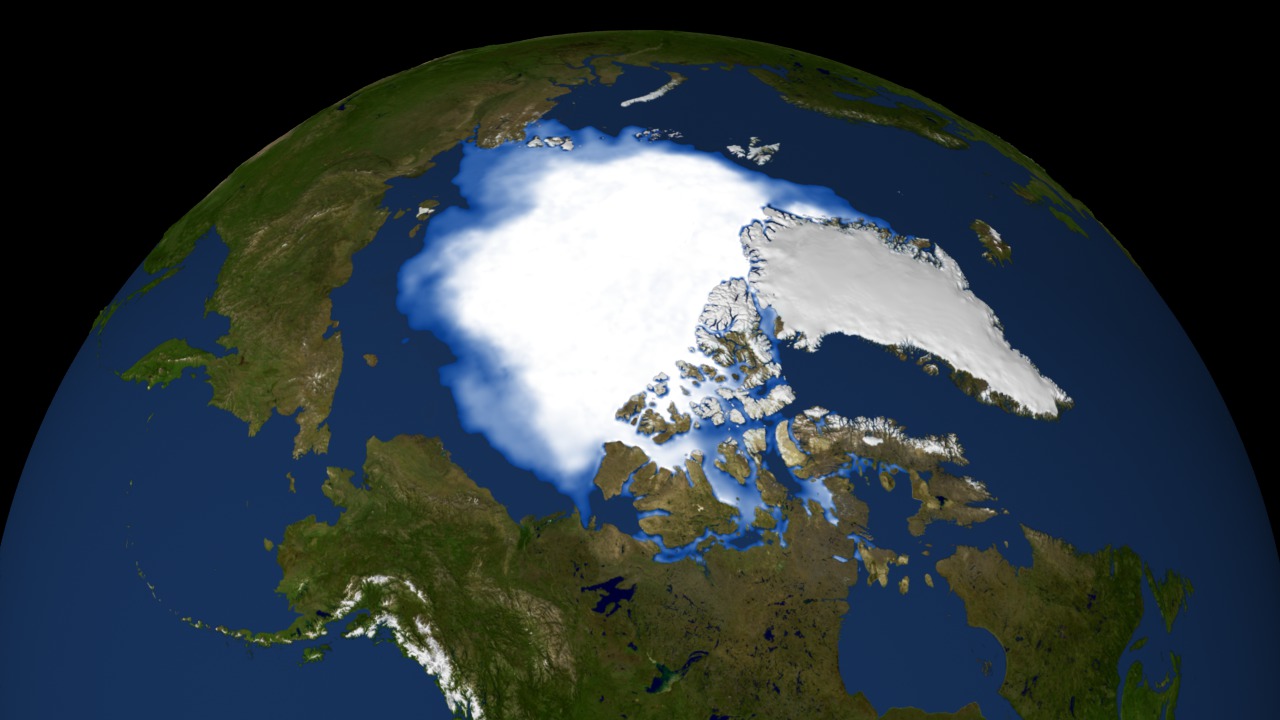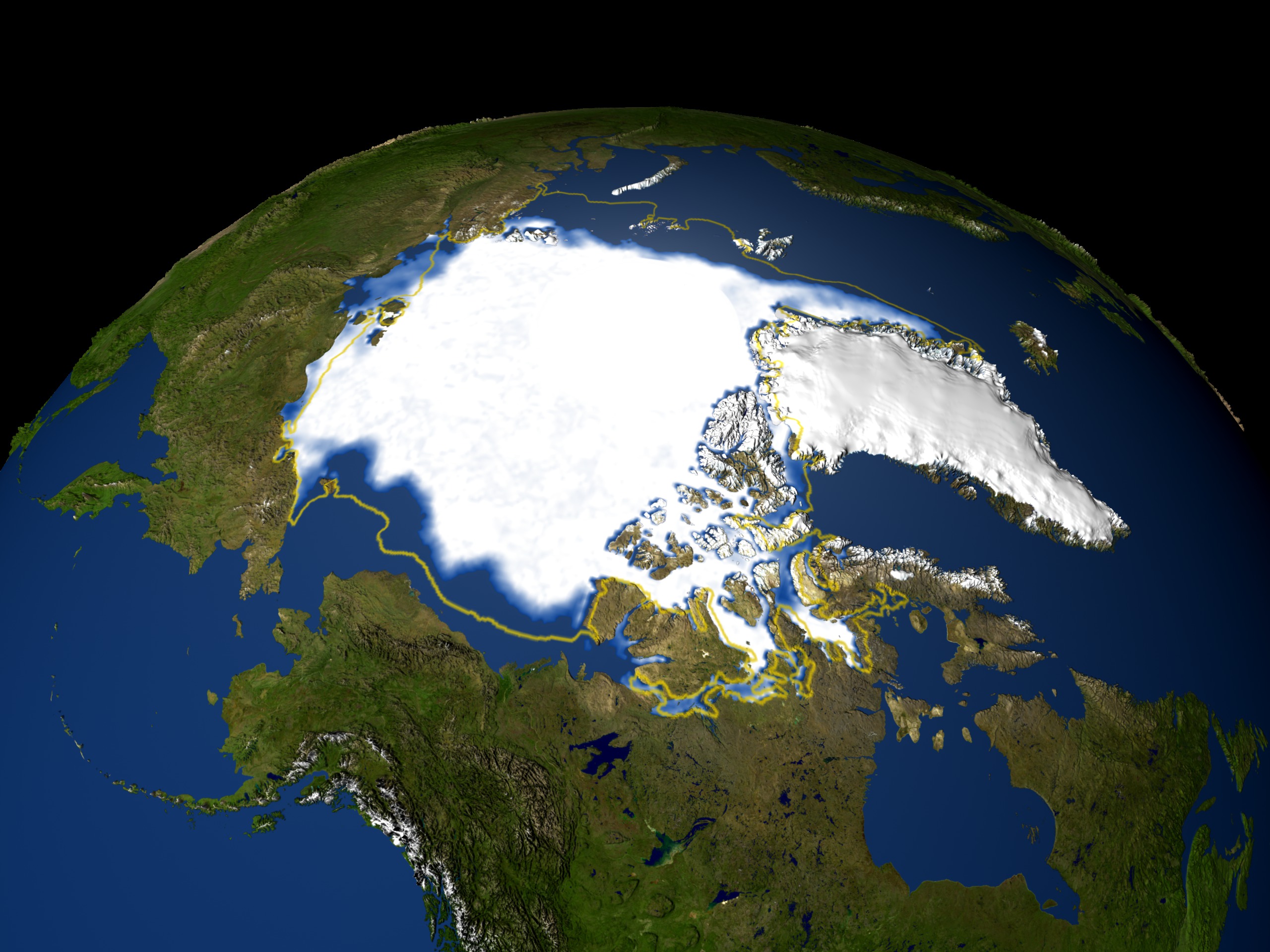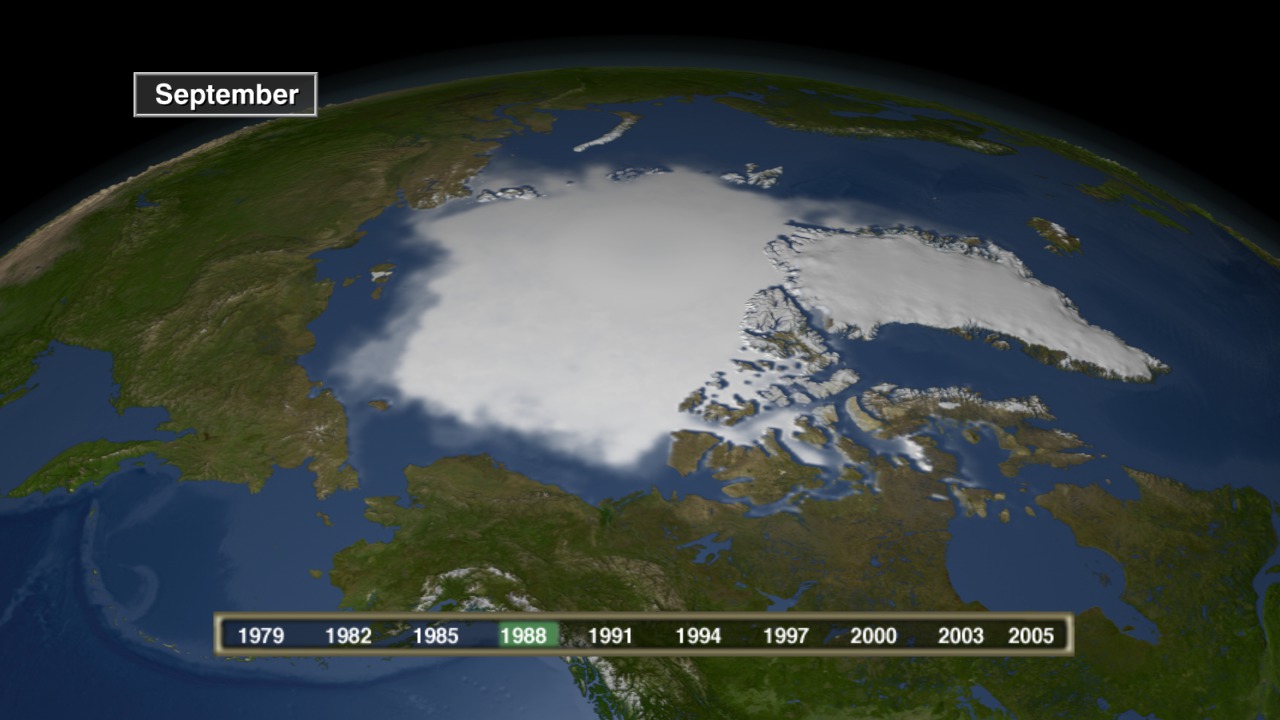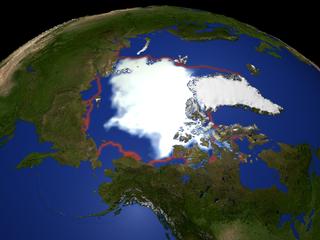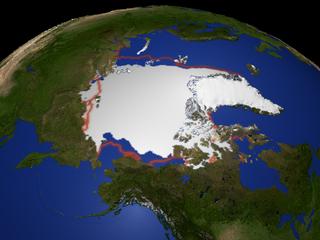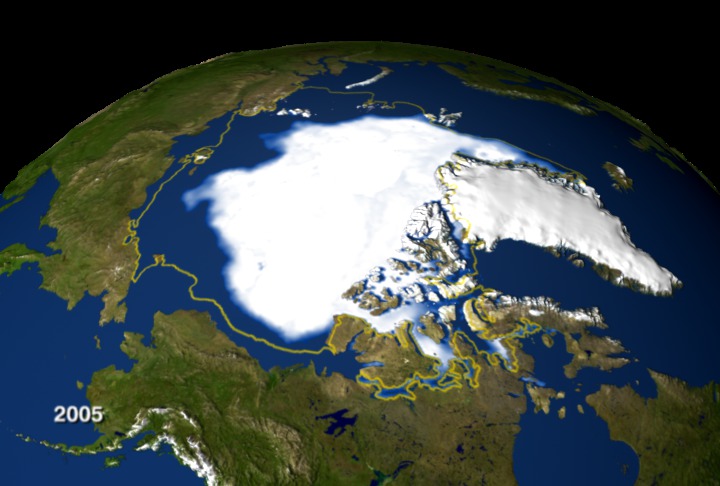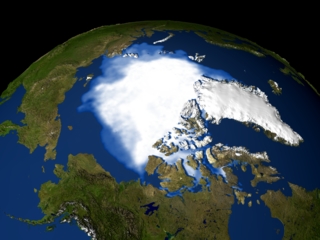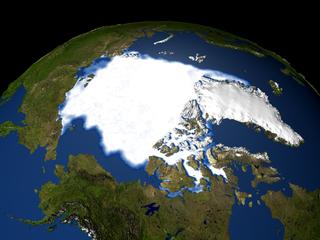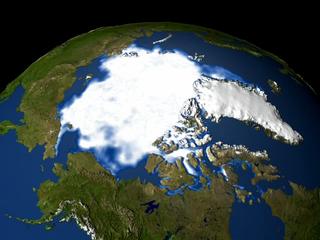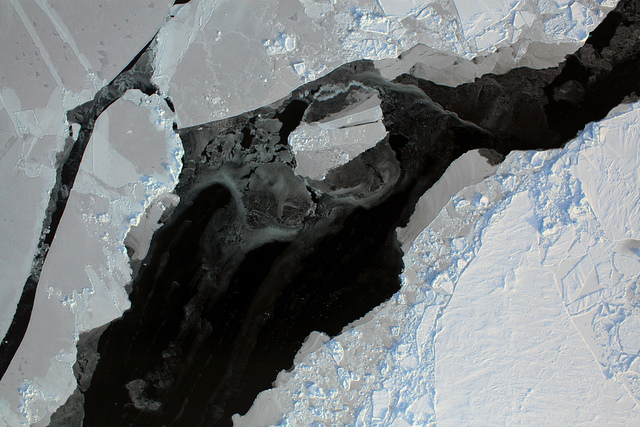A newer version of this visualization is available.
Annual Arctic Sea Ice Minimum 1979-2015 with Area Graph
An animation of the annual Arctic sea ice minimum with a graph overlay showing the area of the minimum sea ice in millions of square kilometers.
This video is also available on our YouTube channel.
Satellite-based passive microwave images of the sea ice have provided a reliable tool for continuously monitoring changes in the Arctic ice since 1979. Every summer the Arctic ice cap melts down to what scientists call its "minimum" before colder weather begins to cause ice cover to increase. The ice parameters derived from satellite ice concentration data that are most relevant to climate change studies are sea ice extent and sea ice area. This graph displays the area of the minimum sea ice coverage each year from 1979 through 2015. In 2015, the Arctic minimum sea ice covered an area of 3.885 million square kilometers.
This visualization shows the expanse of the annual minimum Arctic sea ice for each year from 1979 through 2015 as derived from SSMI data. A semi-transparent graph overlay shows the area in million square kilometers for each year's minimum day. The date shown in the upper right corner indicates the current year being displayed.
An animation of the annual Arctic sea ice minimum from 1979 through 2015 with a date.
The graph overlay with transparency

An image of the Arctic minimum sea ice on September 7, 2015 when it covered an area of 3.884 million square kilometers.

An image of the Arctic minimum sea ice on September 14, 2014 when it covered an area of 4.527 million square kilometers.

An image of the Arctic minimum sea ice on September 9, 2013 when it covered an area of 4.645 million square kilometers.

An image of the Arctic minimum sea ice on September 12, 2012 when it covered an area of 2.91 million square kilometers.

An image of the Arctic minimum sea ice on September 6, 2011 when it covered an area of 3.734 million square kilometers.

An image of the Arctic minimum sea ice on September 17, 2010 when it covered an area of 4.106 million square kilometers

An image of the Arctic minimum sea ice on September 12, 2009 when it covered an area of 4.587 million square kilometers.

An image of the Arctic minimum sea ice on September 17, 2008 when it covered an area of 4.033 million square kilometers.

An image of the Arctic minimum sea ice on September 14, 2007 when it covered an area of 3.712 million square kilometers.

An image of the Arctic minimum sea ice on September 14, 2006 when it covered an area of 5.16 million square kilometers.

An image of the Arctic minimum sea ice on September 21, 2005 when it covered an area of 4.951 million square kilometers.

An image of the Arctic minimum sea ice on September 8, 2004 when it covered an area of 5.399 million square kilometers.

An image of the Arctic minimum sea ice on September 5, 2003 when it covered an area of 5.393 million square kilometers.

An image of the Arctic minimum sea ice on September 8, 2002 when it covered an area of 5.126 million square kilometers.

An image of the Arctic minimum sea ice on September 16, 2001 when it covered an area of 5.879 million square kilometers.

An image of the Arctic minimum sea ice on September 10, 2000 when it covered an area of 5.512 million square kilometers.

An image of the Arctic minimum sea ice on September 11,1999 when it covered an area of 5.2 million square kilometers.

An image of the Arctic minimum sea ice on September 11, 1998 when it covered an area of 5.607 million square kilometers.

An image of the Arctic minimum sea ice on September 2,1997 when it covered an area of 6.133 million square kilometers.

An image of the Arctic minimum sea ice on September 8, 1996 when it covered an area of 6.752 million square kilometers.

An image of the Arctic minimum sea ice on September 8, 1995 when it covered an area of 5.544 million square kilometers.

An image of the Arctic minimum sea ice on September 5, 1994 when it covered an area of 6.273 million square kilometers.

An image of the Arctic minimum sea ice on September 4,1993 when it covered an area of 5.469 million square kilometers.

An image of the Arctic minimum sea ice on August 31, 1992 when it covered an area of 6.499 million square kilometers.

An image of the Arctic minimum sea ice on September 16, 1991 when it covered an area of 5.733 million square kilometers.

An image of the Arctic minimum sea ice on September 3, 1990 when it covered an area of 5.635 million square kilometers.

An image of the Arctic minimum sea ice on September 9, 1989 when it covered an area of 6.265 million square kilometers.

An image of the Arctic minimum sea ice on August 30, 1988 when it covered an area of 6.492 million square kilometers.

An image of the Arctic minimum sea ice on August 23, 1987 when it covered an area of 6.248 million square kilometers.

An image of the Arctic minimum sea ice on September 8, 1986 when it covered an area of 6.663 million square kilometers.

An image of the Arctic minimum sea ice on September 7, 1985 when it covered an area of 6.14 million square kilometers.

An image of the Arctic minimum sea ice on September 10, 1984 when it covered an area of 6.206 million square kilometers.

An image of the Arctic minimum sea ice on September 6, 1983 when it covered an area of 6.785 million square kilometers.

An image of the Arctic minimum sea ice on September 9, 1982 when it covered an area of 6.662 million square kilometers.

An image of the Arctic minimum sea ice on September 6, 1981 when it covered an area of 6.438 million square kilometers.

An image of the Arctic minimum sea ice on August 26, 1980 when it covered an area of 7.01 million square kilometers.

An image of the Arctic minimum sea ice on September 21, 1979 when it covered an area of 6.455 million square kilometers.
Credits
Please give credit for this item to:
NASA/Goddard Space Flight Center Scientific Visualization Studio
The Blue Marble data is courtesy of Reto Stockli (NASA/GSFC).
-
Visualizer
- Cindy Starr (Global Science and Technology, Inc.)
-
Scientists
- Josefino Comiso (NASA/GSFC)
- Walt Meier (NASA/GSFC)
-
Sr. data analyst
- Robert Gersten (Wyle Information Systems)
-
Technical support
- Laurence Schuler (ADNET Systems, Inc.)
- Ian Jones (ADNET Systems, Inc.)
-
Project support
- Joycelyn Thomson Jones (NASA/GSFC)
- Leann Johnson (Global Science and Technology, Inc.)
- Eric Sokolowsky (Global Science and Technology, Inc.)
Release date
This page was originally published on Thursday, March 10, 2016.
This page was last updated on Sunday, January 5, 2025 at 12:07 AM EST.
Series
This page can be found in the following series:Datasets used
-
Comiso's September Minimum Sea Ice Concentration
ID: 540
Note: While we identify the data sets used on this page, we do not store any further details, nor the data sets themselves on our site.
